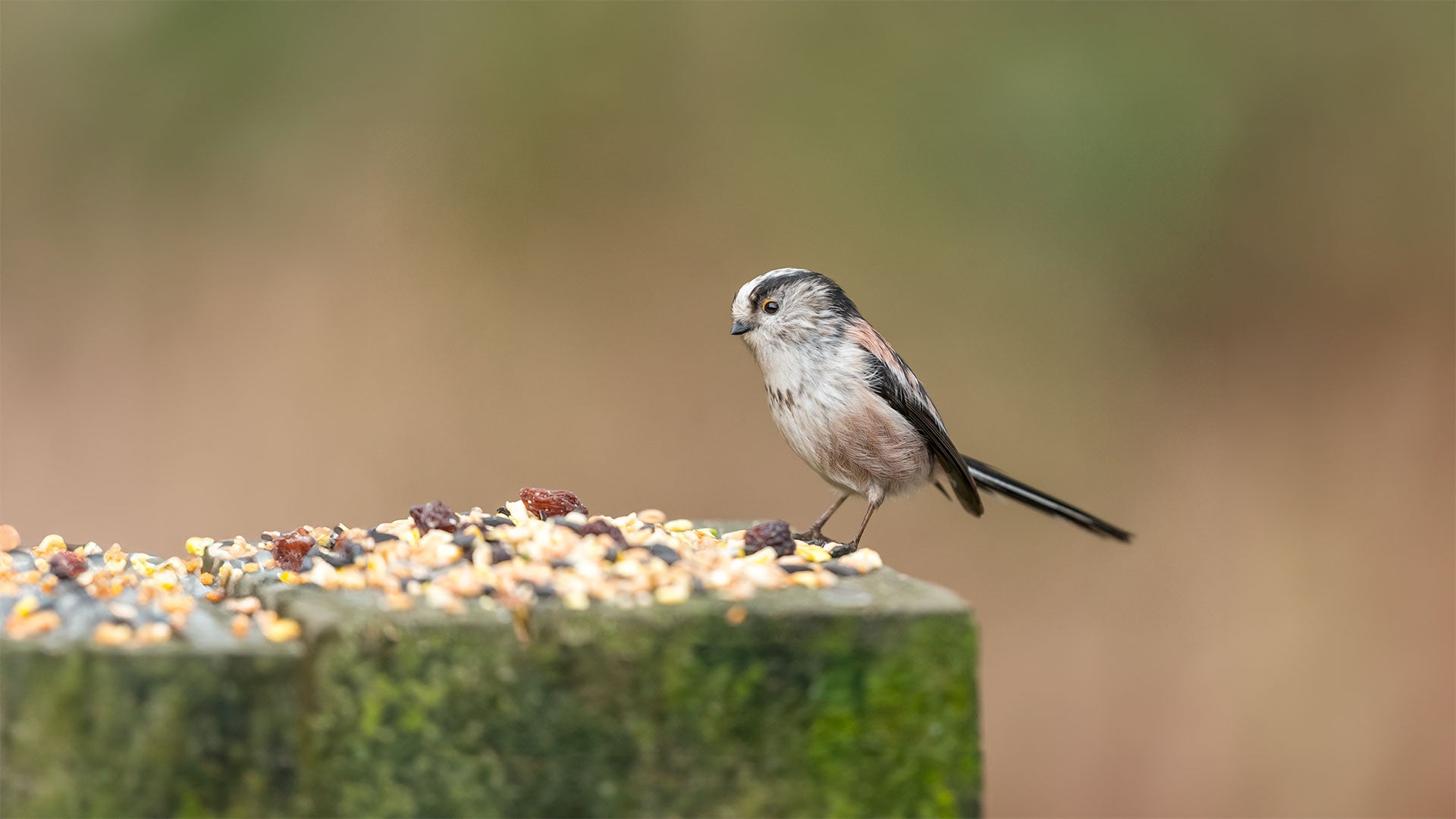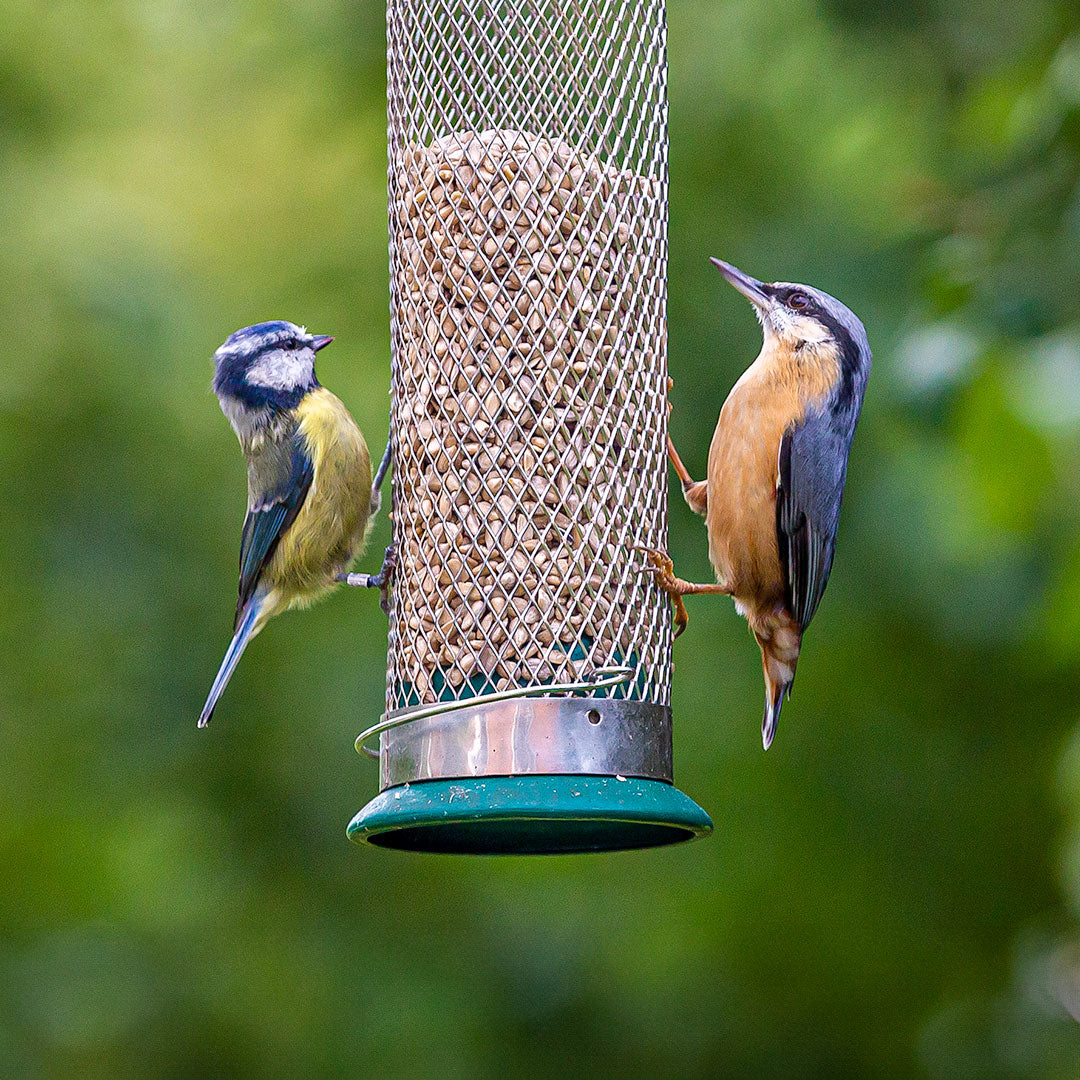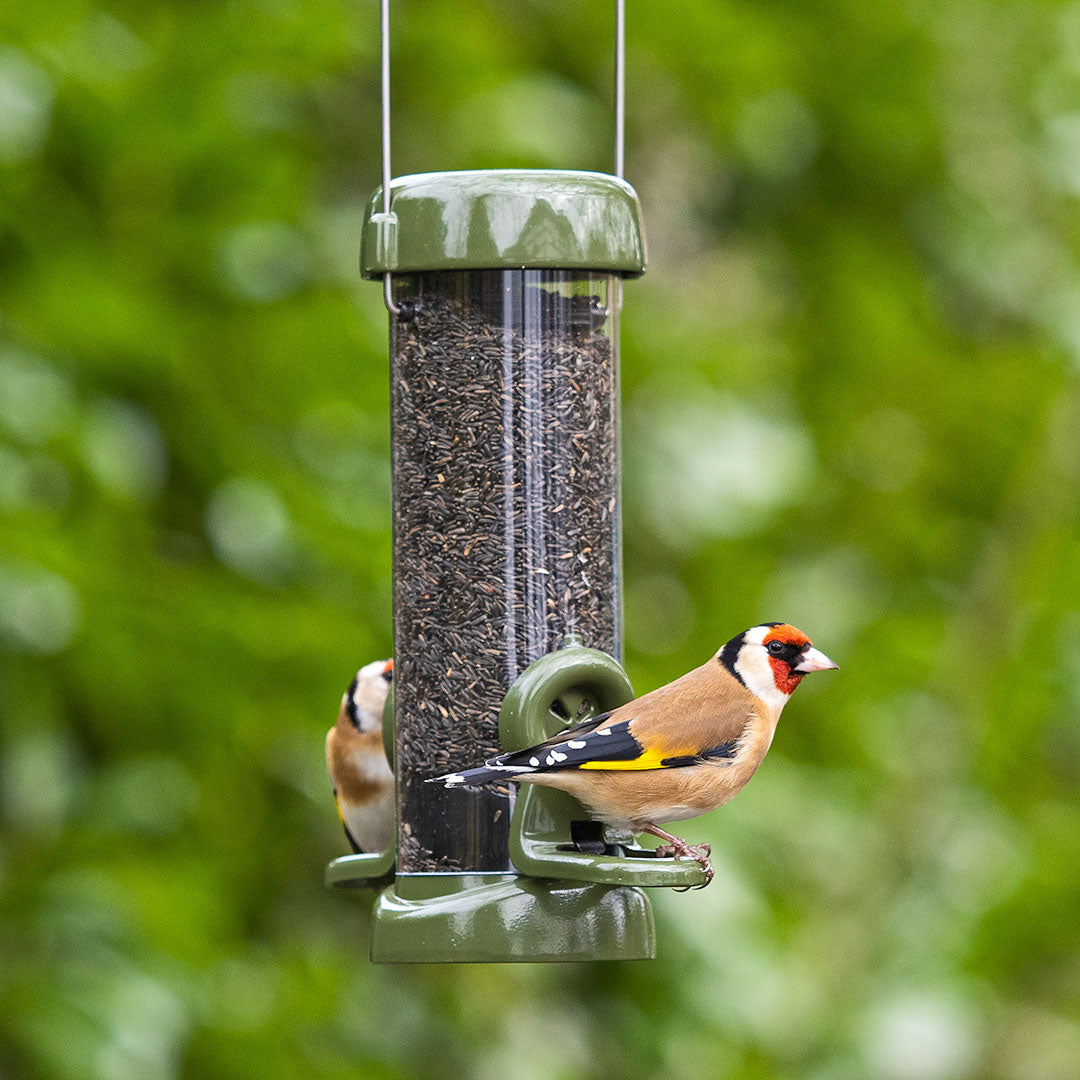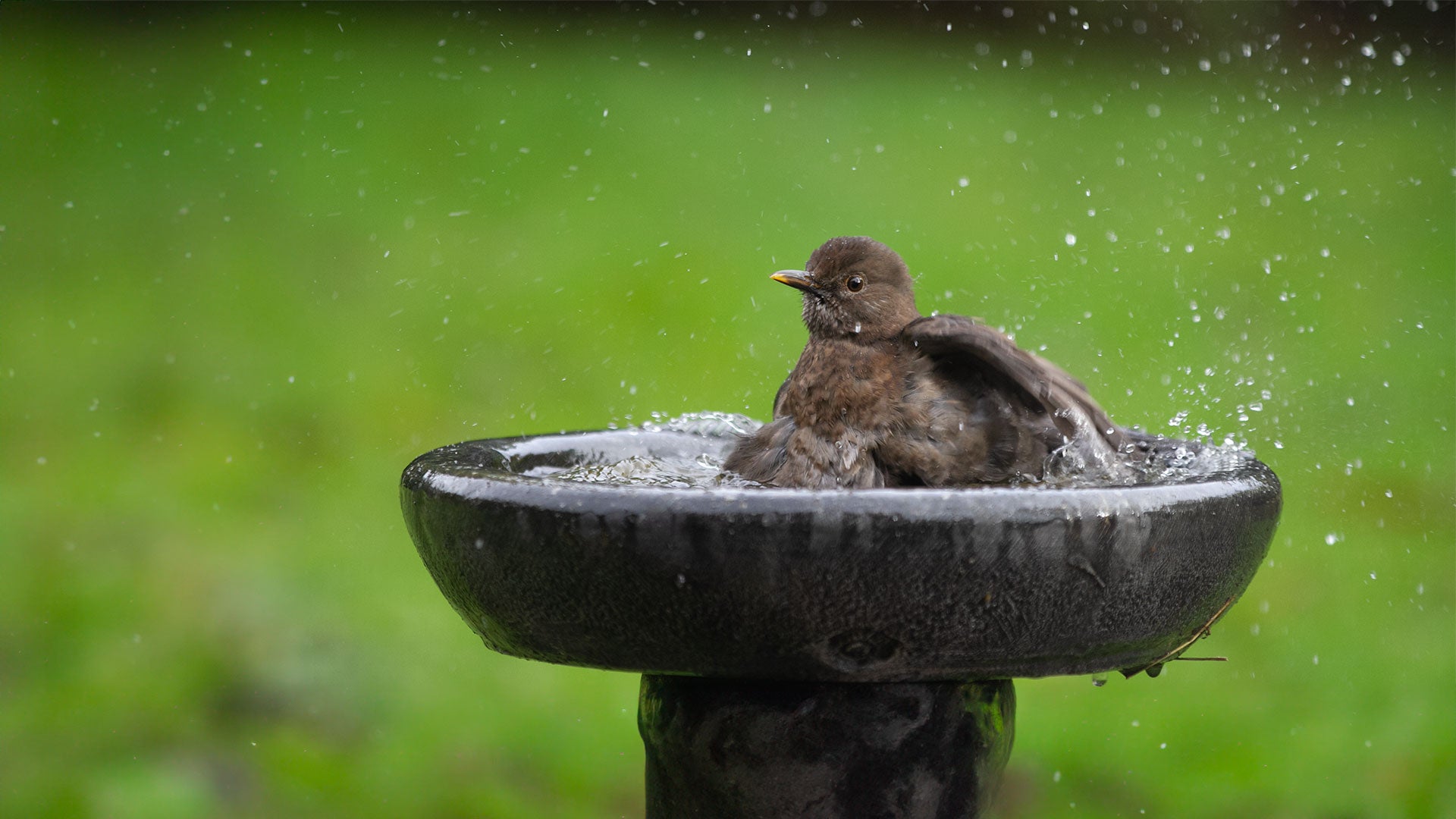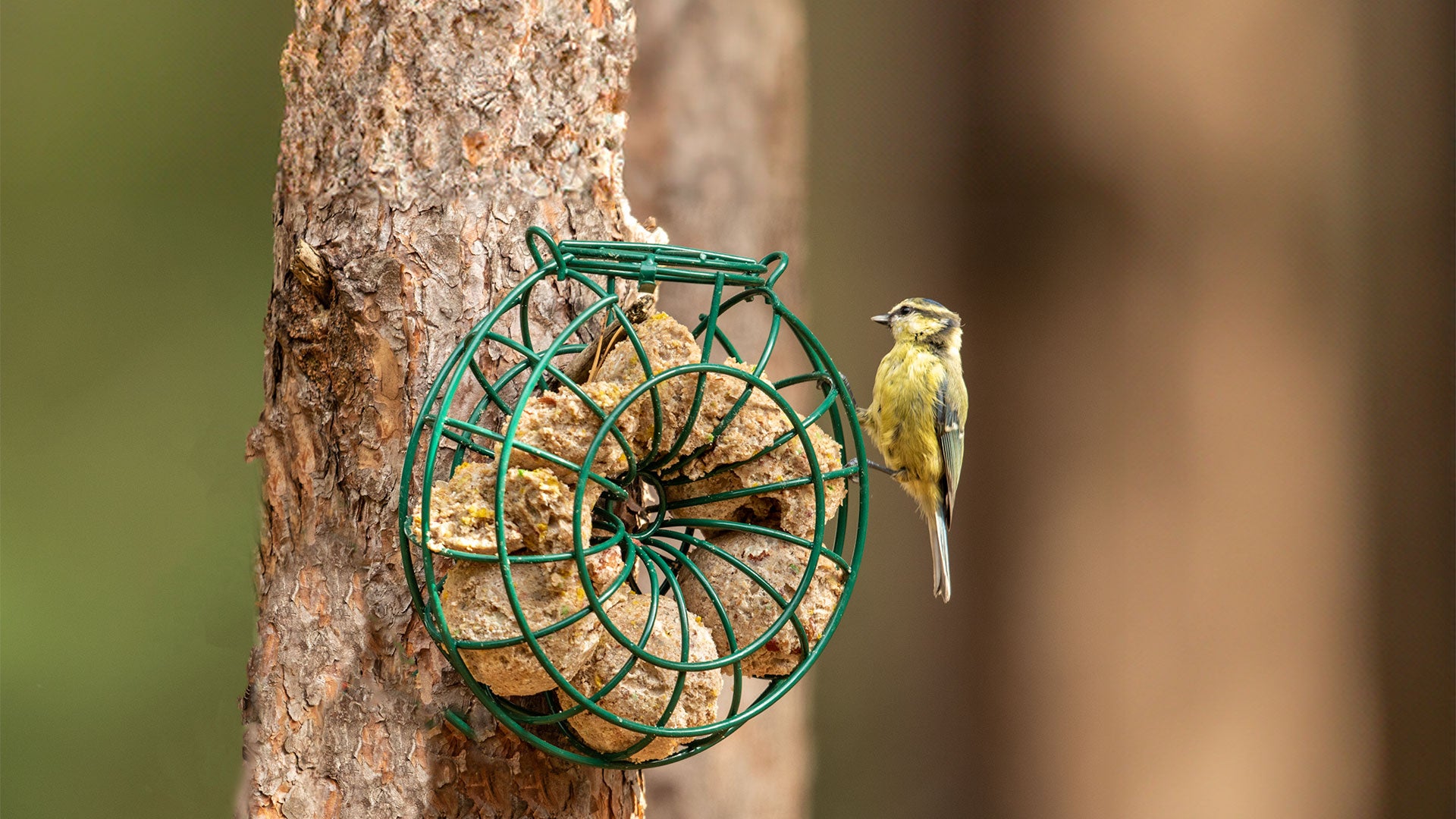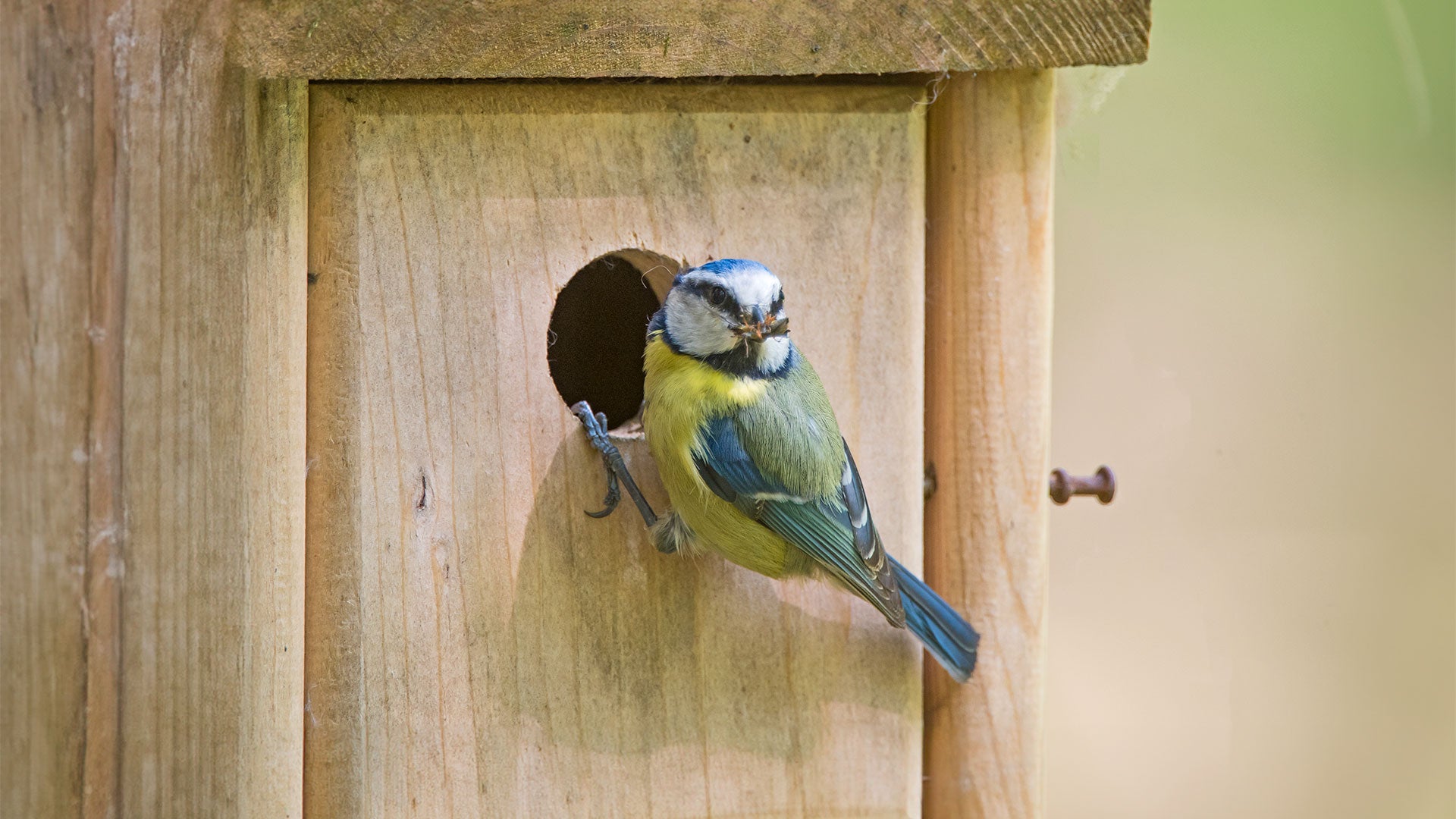A - Z Garden Bird Identification Index
(Phylloscopus collybita)
The Chiffchaff is one of the UK’s earliest spring migrants, often heard before it’s seen as its “chiff-chaff” song rings through woodlands and gardens. Small, lively, and insect-hungry, this warbler is a welcome sign that warmer days are coming. While most fly south in winter, a few now brave our mildest corners year-round.
Identification
Length 11cm.
What does a Chiffchaff look like?
Measuring just 11 cm, the Chiffchaff is a small, active warbler with olive-brown upperparts and pale underparts, lightly streaked with yellow and buff. It can be easily confused with the Willow Warbler but has shorter wings and darker legs.
Chiffchaff call/song – What does a Chiffchaff sound like?
Their call is a sharp, monosyllabic “hweet,” while the familiar song is a repetitive “chiff-chaff, chiff-chaff,” which gives the bird its name. Sometimes they include a deeper, rasping “chirr.”
How long do Chiffchaffs live for?
Chiffchaffs typically live around 2 years in the wild.
Habitat & Nesting
Where do Chiffchaffs live?
Chiffchaffs are found throughout most of the UK in spring and summer, favouring woodland, parks, scrub and gardens, especially those with tall trees. They are summer visitors but increasing numbers are overwintering due to milder winters.
Where do Chiffchaffs nest?
Nesting begins in late April, with nests hidden close to the ground in brambles, nettles or low shrubs. The female builds a domed nest from plant material, thickly lined with feathers.
Chiffchaff nesting habits
Females lay 4–9 shiny white eggs with dark markings. Only the female incubates the eggs for 13–14 days, and she also tends the chicks. Chicks fledge about two weeks after hatching. A second brood is common, though typically smaller (4–5 eggs).
Where do Chiffchaffs sleep?
They roost quietly within dense bushes, bramble patches, or leafy vegetation.
Where do Chiffchaffs go in the winter?
Most Chiffchaffs migrate to the Mediterranean and North Africa for winter, but a growing number now overwinter in southern UK gardens and mild woodland areas.
Diet & Feeding
What does a Chiffchaff eat in the wild?
Chiffchaffs primarily feed on small insects, spiders, and larvae. In autumn and winter, they may take berries or seeds, particularly if insect numbers are low.
What should you feed Chiffchaffs in the garden?
Chiffchaffs are foraging insectivores and unlikely to visit gardens for food in feeders. They prefer an insect rich environment where they hunt. During extreme weather and cold winters, chiffchaffs may visit bird tables that offer:
Where should you feed Chiffchaffs?
- Feeder: Chiffchaffs are unlikely to visit bird feeders
- Table: Chiffchaffs may occasionally visit bird tables for mealworms and suet pellets
- Ground: Chiffchaffs may seek food on the ground in extremely cold conditions
How to attract Chiffchaffs to your garden?
Plant insect-friendly shrubs, allow brambles to grow, and provide live or dried mealworms. Suet pellets are also helpful in cold weather. Chiffchaffs prefer to hunt live prey, often catching it mid-air, so a bug-rich garden is key.
Explore more in our A-Z Bird Identification Guide for detailed profiles of all your garden favourites.
Looking to spot a new visitor on your feeder? Our comprehensive species pages help you recognise and care for every bird that drops in.


